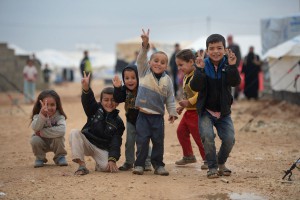By Erin Clifford, University of Massachusetts Lowell
Part 1: Autism
Community psychology is a bright, shiny, fairly new area of study can help bring resounding, meaningful change to a multitude of communities that in the 21st century. Simply defined, community psychology is “concerned with understanding people in context of their communities, the prevention of the problems of living, the celebration of human diversity and the pursuit of social justice through social action” (Scott & Wolfe, 2015). In the first part of this three part blog series, I bring to attention one of the many areas that community psychology can be applied to: autism. I chose to connect community psychology and autism for this first blog because I am closely tied to the autism community after working with individuals with autism for 6 years. This is my attempt to bring community psychology closer to home for a community I hold dear to my heart.
Autism is a neurodevelopmental disorder characterized by impairments in communication and social skills, as well as displays of restricted and repetitive behaviors. The Center for Disease Control (CDC) currently estimates the prevalence rate of autism to be around 1 in 68 children, up from 1 in 88 in the early 2000’s (Bookman-Frazee et al., 2012). This number will continue to rise, and because it will continue to rise, community psychology may have a chance to be readily applied to the autism community should it be needed. And indeed, the need for community psychology application is ever present in that many families may not have accurate, or any, resources for support in raising and caring for a child with autism. Luckily, community psychologists are already making endeavors in the autism community.
One example is the endeavor of Lauren Brookman-Frazee, Aubyn Stahmer, Karyn Lewis, Joshua Feder, and Sarah Reed, all community psychologists, to develop a researchcommunity collaborative group with a focus on autism that was developed based on community-based participatory research principles (Brookman-Frazee, et al. 2012). Their efforts are articulated in a 2012 article from The Journal of Community Psychology. (Follow this link to read the whole article: https://drive.google.com/file/ d/0B_7sOuxnRLcnRTVyWVpVblR2LWM/view?usp=sharing) They explain that in order to successfully promote and implement the most effective treatment options for children with autism, there needs to be close collaboration with community providers. They refer to this concept as community-based participatory research (CBPR). CBPR is “used in the field of public health to reduce inequities in care through active involvement of community members, organizations, and researchers in all aspects of the research process”, and “ addresses disparities by promoting mutual transfer of expertise and shared decision making between researchers and community members” (Brookman-Frazee et al., 2012). Using the CBPR principles and model, the team created the Southern California BRIDGE Collaborative in 2011, a research-community partnership that brings together practitioners, funding agency representatives, researchers, and families of children with autism to develop community-wide, sustainable plans for serving infants and toddlers at risk for autism. BRIDGE stands for Bond, Regulate, Interact, Develop, Guide, words that reflect the values of the treatments offered, as well as to represent the bridge being built between research and practice. (Brookman-Frazee et al., 2012). The BRIDGE Collaborative was the first use of the partnership model in the field of treatment options for children with autism.
This example of the BRIDGE Collaborative allows us to see that community psychology is readily applied to the autism community based on the fact that it is concerned with addressing the problems of living. Within the autism community, especially within the community of children with autism, it can be seen that the awareness and availability of treatment options can be considered problems of living. This application of community psychology brings it closer to home because it clearly demonstrates that with the combined efforts of community psychologists, and the goals of community psychology itself, there has been a resounding and meaningful step in helping the autism community that I feel so close to.
#commpsych
Erin Clifford is a graduate student in the Autism Studies program at the University of Massachusetts.
References
Brookman‐Frazee, L., Stahmer, A. C., Lewis, K., Feder, J. D., & Reed, S. (2012). Building a researchcommunity collaborative to improve community care for infants and toddlers at-risk for autism spectrum disorders. Journal of Community Psychology, 40(6), 715-734. doi:10.1002/ jcop.21501
Scott, V. C., & Wolfe, S. M. (2015). Community Psychology: Foundations for Practice. Thousand Oaks: SAGE Publications. References


